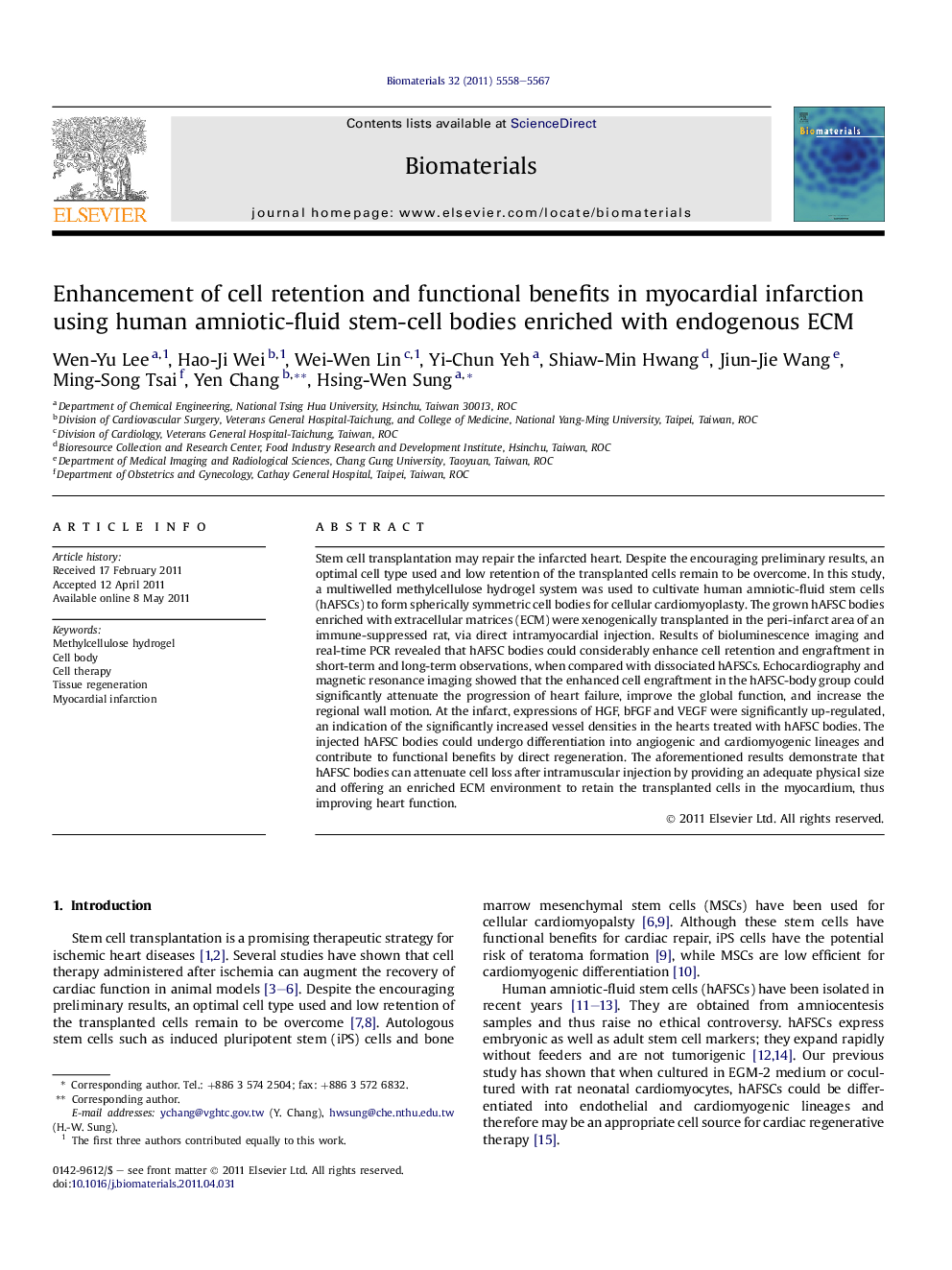| Article ID | Journal | Published Year | Pages | File Type |
|---|---|---|---|---|
| 8071 | Biomaterials | 2011 | 10 Pages |
Stem cell transplantation may repair the infarcted heart. Despite the encouraging preliminary results, an optimal cell type used and low retention of the transplanted cells remain to be overcome. In this study, a multiwelled methylcellulose hydrogel system was used to cultivate human amniotic-fluid stem cells (hAFSCs) to form spherically symmetric cell bodies for cellular cardiomyoplasty. The grown hAFSC bodies enriched with extracellular matrices (ECM) were xenogenically transplanted in the peri-infarct area of an immune-suppressed rat, via direct intramyocardial injection. Results of bioluminescence imaging and real-time PCR revealed that hAFSC bodies could considerably enhance cell retention and engraftment in short-term and long-term observations, when compared with dissociated hAFSCs. Echocardiography and magnetic resonance imaging showed that the enhanced cell engraftment in the hAFSC-body group could significantly attenuate the progression of heart failure, improve the global function, and increase the regional wall motion. At the infarct, expressions of HGF, bFGF and VEGF were significantly up-regulated, an indication of the significantly increased vessel densities in the hearts treated with hAFSC bodies. The injected hAFSC bodies could undergo differentiation into angiogenic and cardiomyogenic lineages and contribute to functional benefits by direct regeneration. The aforementioned results demonstrate that hAFSC bodies can attenuate cell loss after intramuscular injection by providing an adequate physical size and offering an enriched ECM environment to retain the transplanted cells in the myocardium, thus improving heart function.
